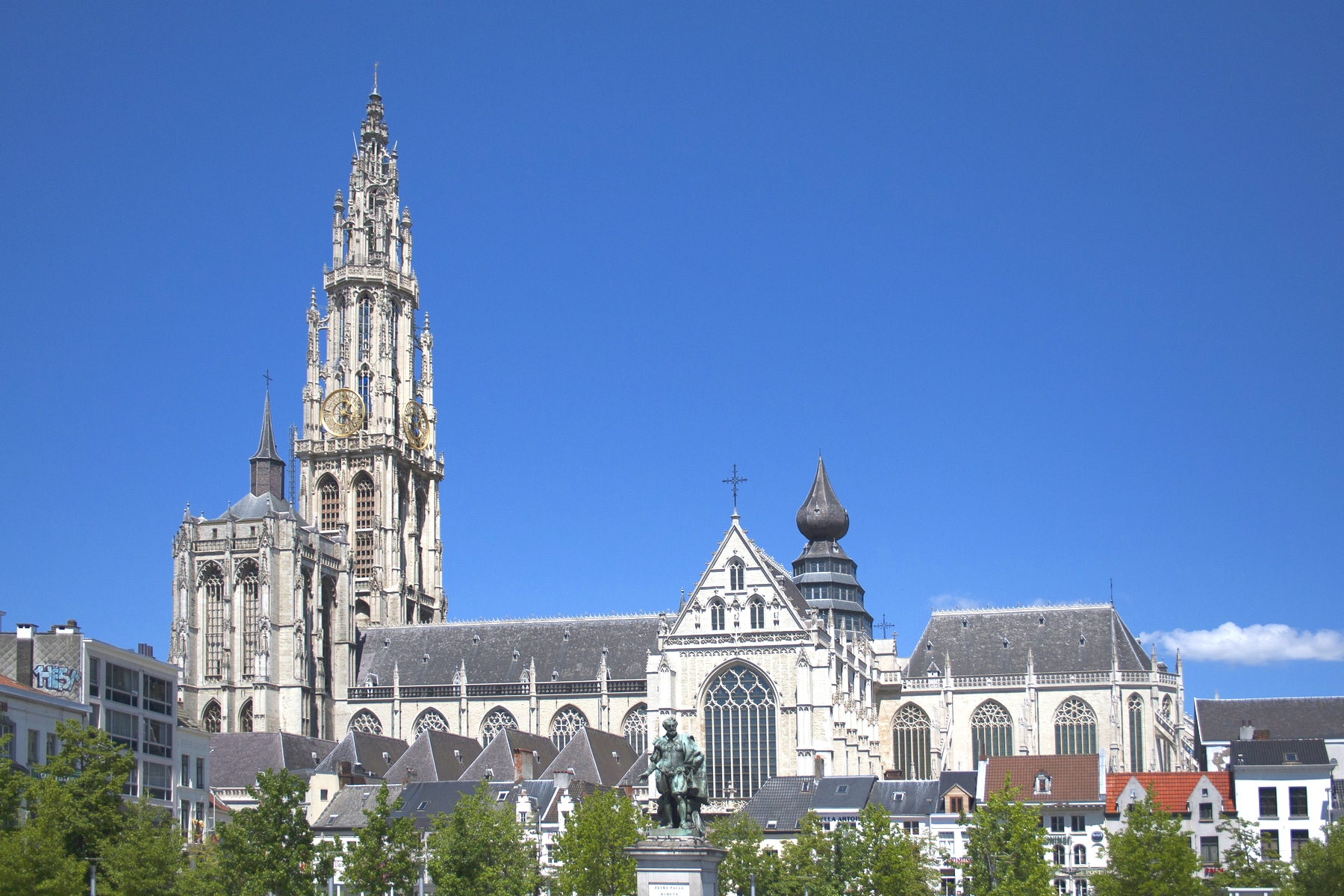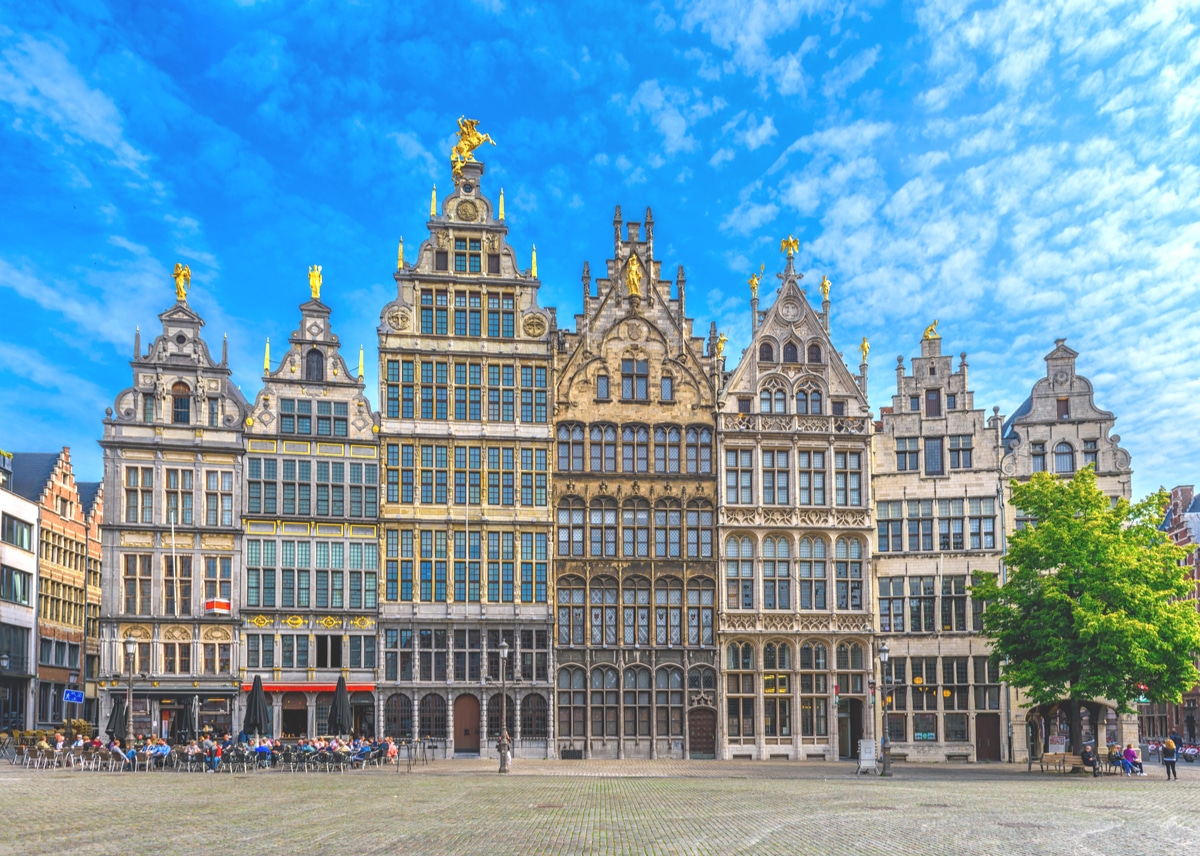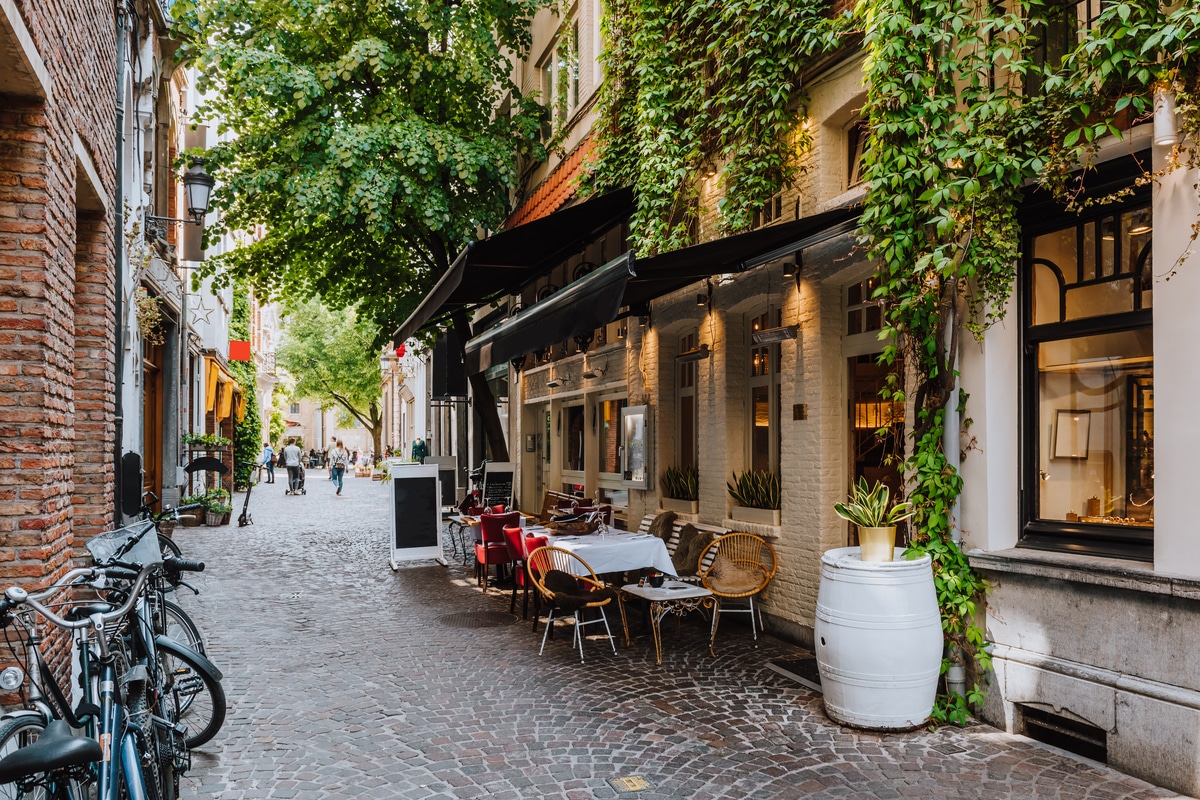Cathedral of Our Lady
The seven-nave basilica is the largest Gothic church in the Benelux and a masterpiece of Gothic architecture. The 123-metre high north tower has been a UNESCO World Heritage Site since 1999.

History
Already in the 10th century there was a chapel on the same spot. When this was elevated to a parish church in the 12th century, the former place of worship was expanded into a church in the Romanesque style.
In the middle of the 14th century, construction of the present building was finally begun: In the Gothic style, a central nave with six side aisles was erected. After a construction period of almost 170 years, the building was stopped in 1521. A planned second tower was never completed. Instead, it was closed with a dome in the 17th century.
After a fire in 1533, the church was rebuilt and elevated to cathedral status in 1559 with the founding of the Antwerp diocese. During the iconoclasm in the 16th century, many figures on the exterior of the building were destroyed. The interior of the church was devastated and many works of art were destroyed. In the course of the French Revolution, the place of worship was looted, used as a cattle shed, badly damaged and subsequently altered again and again. The decorated gable field above the entrance, for example, was only created at the beginning of the 20th century. Since the 1960s, the cathedral has been extensively restored over a period of almost 30 years.
The church as a museum
Today, the Onze-Lieve-Vrouwekerk is popular not only because of its striking architecture, but also because of its art treasures inside. For despite several fires, the looting and the Protestant rule over Antwerp, numerous works of art have been preserved.
Among the most famous treasures are four paintings by Peter Paul Rubens: "The Resurrection of Christ", "The Assumption of the Virgin", "The Assumption of the Cross" and "The Deposition from the Cross". The latter in particular is one of the artist's most famous paintings and is considered one of the most important works of Baroque painting. A figure of the Madonna and Child also survived the iconoclasm and is worth seeing today, as is a representation of the praying Francis of Assisi by the painter Bartolomé Esteban Murillo. The choir stalls are also impressive.
[caption id="attachment_24536" align="alignnone" width="800"]  Inside the Cathedral of Our Lady, photo: Mistervlad / Shutterstock.com[/caption]
Inside the Cathedral of Our Lady, photo: Mistervlad / Shutterstock.com[/caption]
The cathedral as the setting for the story "A Dog of Flanders".
It's hard to miss the large statue on the church forecourt. Blissfully, a boy seems to be sleeping there, his dog in his arms, covered by the square's cobblestone ceiling. What seems so peaceful here, however, is the end of a sad story: "A Dog of Flanders" - written in 1872 by Marie Louise de la Ramée - is about the orphan boy Nello and his friendship with the dog Patrasche. The important place of action in the story is the cathedral, which Nello visits almost every day to admire the works of Rubens. Rubens is a great role model for Nello, who is a great draughtsman himself.
Fate, however, does not favor the boy: First he loses his grandfather, then his only friend, the miller's daughter, as he is blamed for a fire in the mill. Alone and completely destitute, Nello seeks shelter in the church one evening, starving and freezing. There he dies of deprivation with the dog in his arms.
[caption id="attachment_24538" align="alignnone" width="800"]  A Dog of Flanders, Photo: Erik AJV / Shutterstock.com[/caption]
A Dog of Flanders, Photo: Erik AJV / Shutterstock.com[/caption]
Tickets and prices
- Single visitors (from 18 years): 8,00 € p. p.
- Groups of 20 or more, students and 60+: €6.00 p. p.
- Children and teenagers under 18 years and residents of the province of Antwerp: free admission
Wegbeschreibung
- Streetcar: Line 3, 5, 9, 15 and 4 to Groenplaats stop,
- Bus: line 22, 180, 181, 182, 183 to Groenplaats stop.


